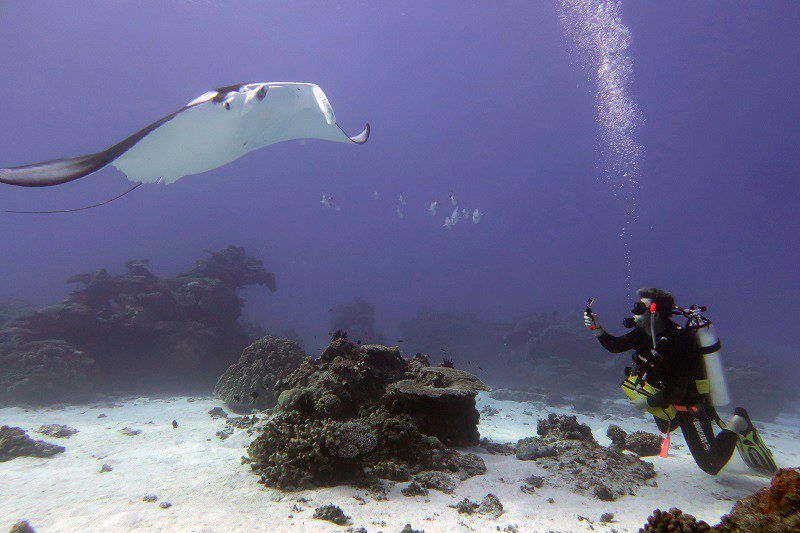DIVING NEWS
Divers’ shots reveal manta secrets

Picture: Asia Armstrong
Reef manta rays have a much bigger home range than previously thought, according to evidence provided by divers to researchers in Australia.
The rays have been recorded travelling a “record-breaking” distance of more than 700 miles along the Queensland coast – from North Stradbroke Island to the wreck of the Yongala, near Townsville.
The findings came about as a result of citizen-science initiative Project Manta, involving photographs and video footage submitted by scuba divers and snorkellers.
7 August 2019
The study, led by PhD candidate and diver Asia Armstrong of the University of Queensland, is intended to assist in conservation management of Mobula alfredi, which is listed as a vulnerable species.
“We relied on the cameras and eyes of both trained researchers and volunteers, who helped us build a catalogue of more than 1300 individual reef manta rays, from in excess of 7000 sightings,” said Armstrong.
The images were analysed to isolate the distances travelled by individual rays, identified by their unique spot patterns.
“Each time an animal is photographed we record the date, time and location of the sighting, along with any additional information, like its sex, maturity status, injuries and behaviour,” said Armstrong. “When a sighting is matched to an existing record we gain insights into the ray’s movements and population dynamics.”
Of the extended coastal journeys, she said: “This is a record-breaking point-to-point movement for a reef manta ray, improving our understanding of the potential home range for this species.” The distance covered was more than twice that recorded in previous studies.
“It’s important now to connect with regional research groups to enable us to compare catalogues, which may reveal longer-distance movements than those we’ve discovered,” she said, adding that more information was required about mantas moving between different countries’ waters.
“With the help of international researchers, along with passionate citizen-scientists and conservationists, we can really improve the long-term chances for this incredible species.”

